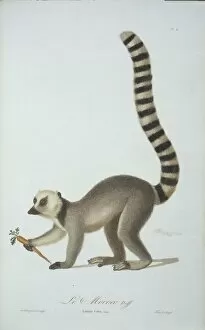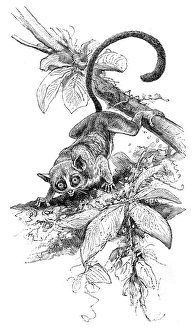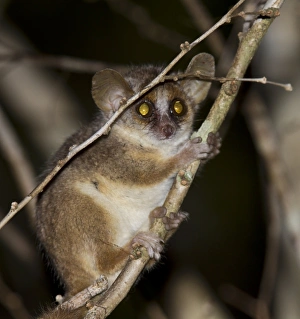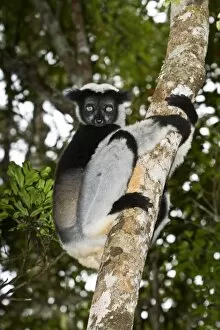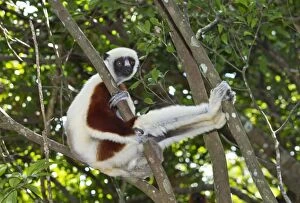Prosimian Collection (page 2)
"Exploring the Enigmatic Prosimians: A Glimpse into Nocturnal Life" In the depths of West Africa's Ankasa Reserve, a fascinating creature emerges from the shadows
All Professionally Made to Order for Quick Shipping
"Exploring the Enigmatic Prosimians: A Glimpse into Nocturnal Life" In the depths of West Africa's Ankasa Reserve, a fascinating creature emerges from the shadows. Meet the West African Potto (Perodicticus potto potto), an adult prosimian who gracefully navigates through its habitat at night. With nimble fingers and keen senses, it effortlessly climbs on branches, showcasing its remarkable agility. Venturing further east to Madagascar's Akanin ny nofy Reserve, we encounter two other captivating members of the prosimian family. The Indri and Tarsier captivate with their unique characteristics. The Indri stands tall amidst lush foliage, emitting haunting calls that echo across the forest canopy. Meanwhile, the Tarsier enchants us with its large eyes adapted for nocturnal hunting. Delving into history, an engraving from 1895 reveals another intriguing prosimian species - the Aye-aye. Native to Madagascar's Lake Ampitabe region, this rare primate possesses elongated fingers used for extracting insects from tree bark. Its peculiar appearance has made it both revered and feared by local communities throughout time. These snapshots offer glimpses into a diverse group of primates known as prosimians - often referred to as "pre-monkeys. " Found primarily in Africa and Madagascar, they exhibit distinct adaptations that have allowed them to thrive in various environments. As we marvel at these images captured by DDE-90020979 through DDE-90020980 lenses, let us appreciate these incredible creatures' resilience and importance within their ecosystems. By studying them closely, scientists gain valuable insights into our own evolutionary past. So next time you find yourself beneath moonlit canopies or exploring nature reserves like Ankasa or Akanin ny nofy Reserve – take a moment to imagine what life is like for these enigmatic prosimians after dark.

